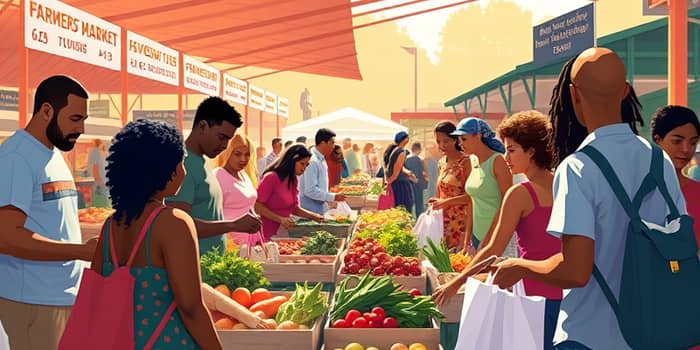
As global food prices rise and fall, households and businesses adapt in real time. The ripples of food inflation extend far beyond grocery shelves, reshaping behaviors, diets, and even community bonds.
Food prices spiked dramatically during the pandemic and subsequent supply disruptions. By 2024, the global food CPI inflation eased to 3.3%, down from 10.1% in 2022 and 8.3% in 2023. Yet since 2019, food costs have climbed a staggering 31% worldwide. In contrast, general consumer prices fell to 3.0% in 2024 after peaking at 7.8% in 2022. These shifts highlight how food costs often outpace broader inflation trends, especially in low and middle-income countries.
In the United States, food prices in May 2025 were 2.9% higher year-over-year, with groceries up 2.2% and restaurant meals up 3.8%. Meanwhile, 76.5% of low-income and 54.5% of lower-middle-income nations continued to face food inflation above 5%. In 60% of 161 countries with available data, food price inflation exceeded overall inflation, underscoring persistent vulnerability.
Multiple factors converge to drive food inflation:
Energy cost reductions have recently helped ease pressure, but weather extremes and geopolitical tensions continue to introduce uncertainty. As the world population grows and diets shift, underlying demand pressures persist.
When faced with higher food bills, households employ various strategies to balance budgets without sacrificing nutrition:
Elasticities reveal that a 10% rise in cereal prices cuts demand by 6.1% in low-income countries versus 4.3% in high-income ones. Non-staple foods—like snacks, confectionery, and seafood—see sharper demand contractions as consumers prioritize essential calories and nutrients.
Mounting food costs can undermine diet quality, particularly for vulnerable groups. As prices climb, households may reduce intake of fresh produce, dairy, and lean proteins—replacing them with calorie-dense but nutrient-poor options. This dietary shift increases the risk of micronutrient deficiencies and chronic diseases over time.
Public health experts warn that sustained food inflation could reverse years of progress in tackling malnutrition. In some regions, nutritionally balanced meals become a luxury rather than a standard expectation. The societal cost of deteriorating diets—both in healthcare expenses and lost productivity—cannot be overstated.
Despite these challenges, individuals, communities, and policymakers can take proactive steps to build resilience and secure affordable nourishment.
On a broader scale, retailers are expanding value packs and promotions, while governments explore subsidies and price caps to protect vulnerable populations. Behavioral economics suggests nudges—like strategic product placements of healthy staples—can gently steer consumers toward better choices even under budget constraints.
Projections for 2025 suggest food-at-home prices may rise 2.2%, with food-away-from-home climbing 3.9%. Yet the regional outlook remains uneven: lower-income countries continue to face steep inflationary pressures. Long-term resilience depends on strengthening supply chains, investing in climate-smart agriculture, and fostering local food systems.
By combining community-driven initiatives with informed consumer choices, society can mitigate the worst impacts of food inflation. Innovation in urban farming, digital marketplaces, and collaborative consumption holds promise for bridging affordability gaps.
Ultimately, navigating food inflation demands collective action. Each meal planned, each community garden planted, and each policy advocated moves us closer to a world where nutritious food remains within reach for all.
References













